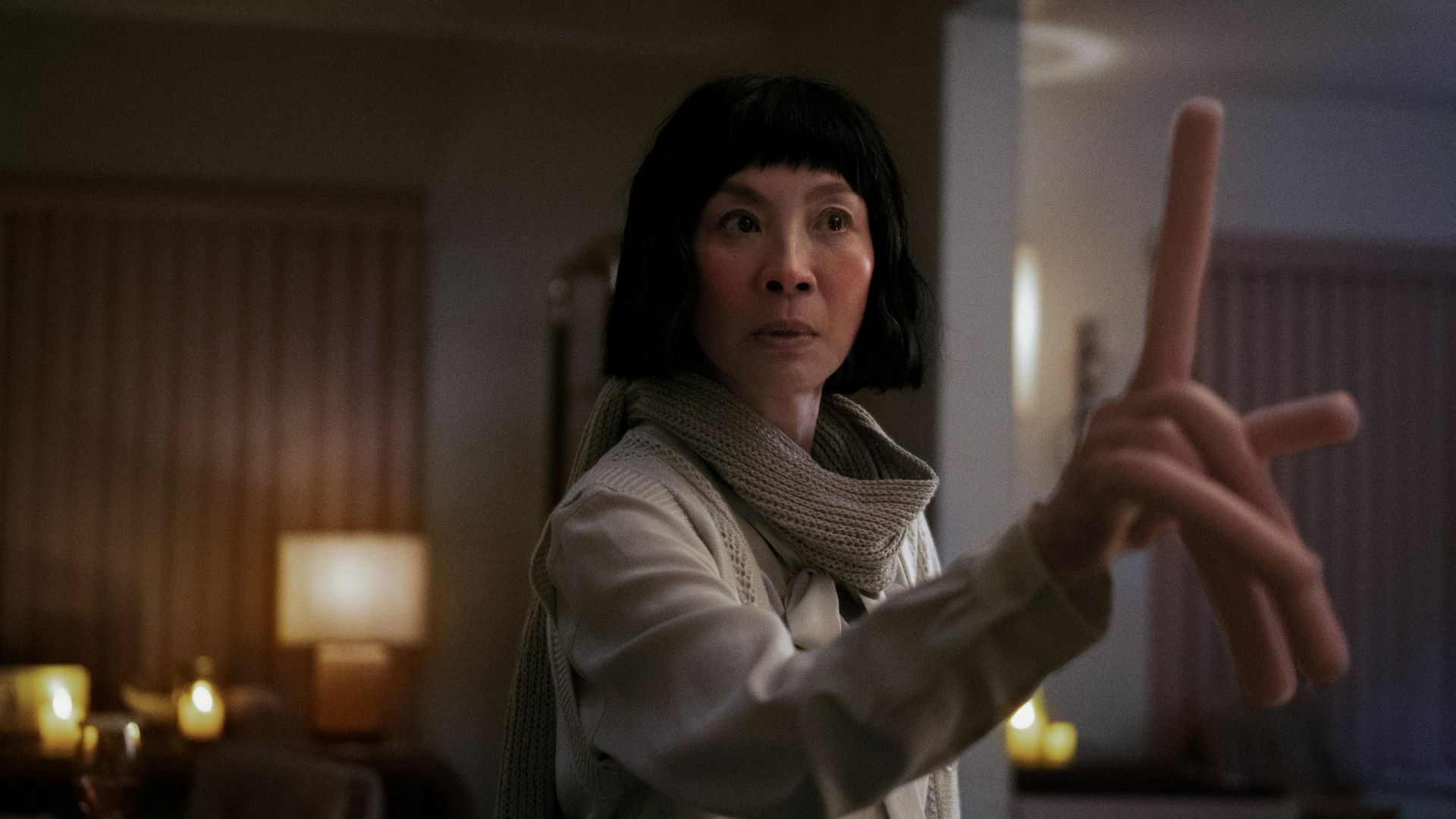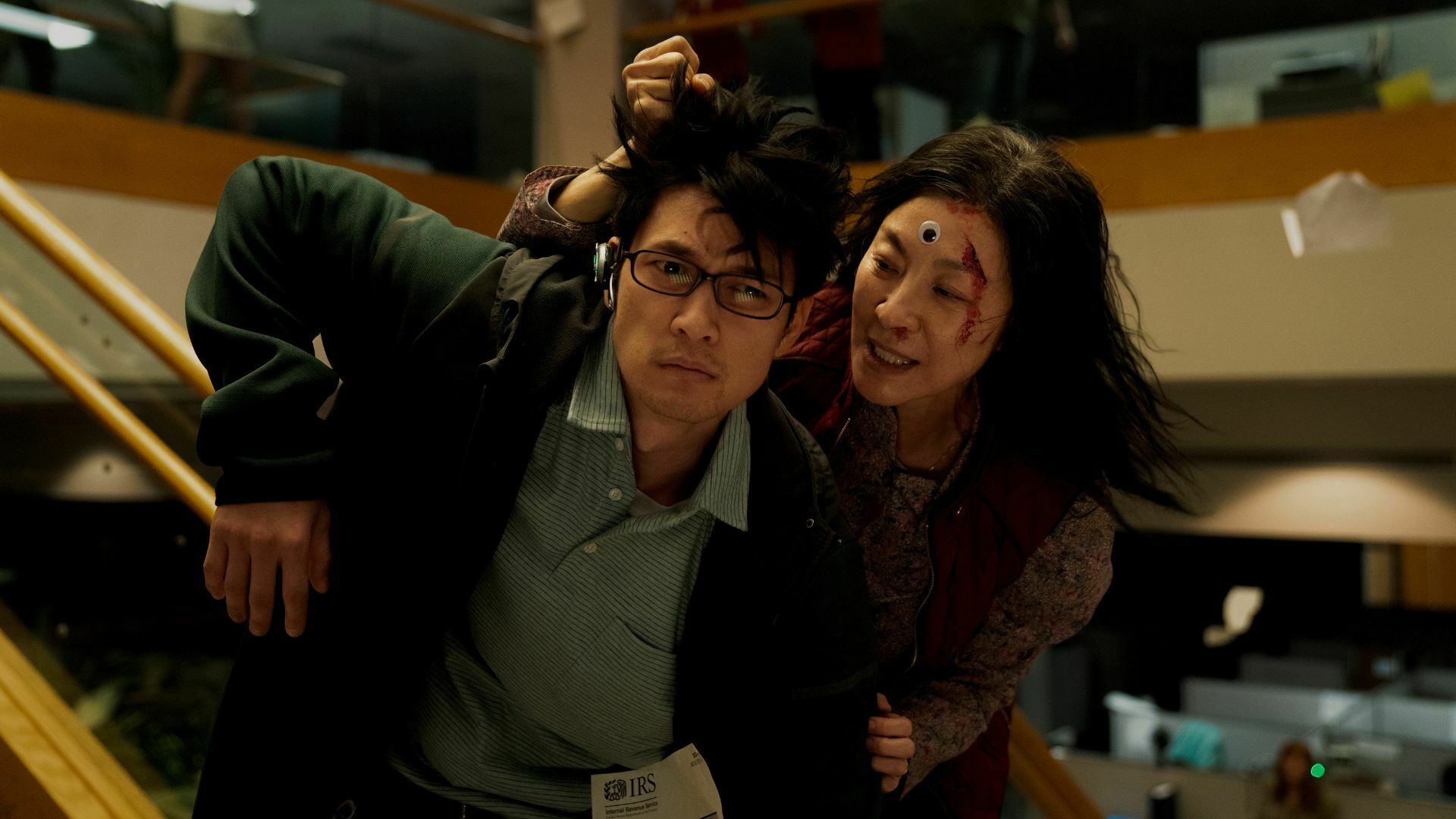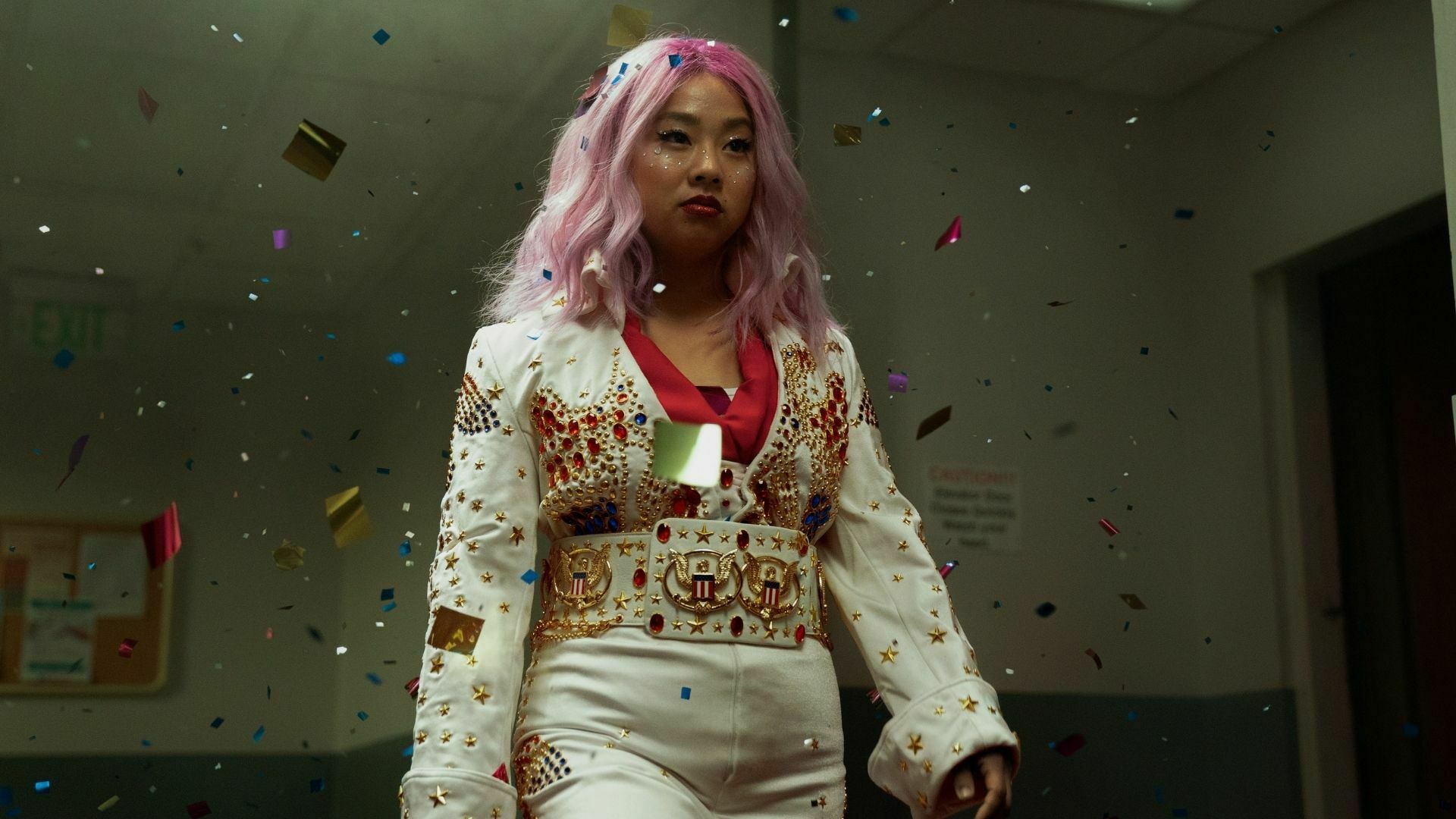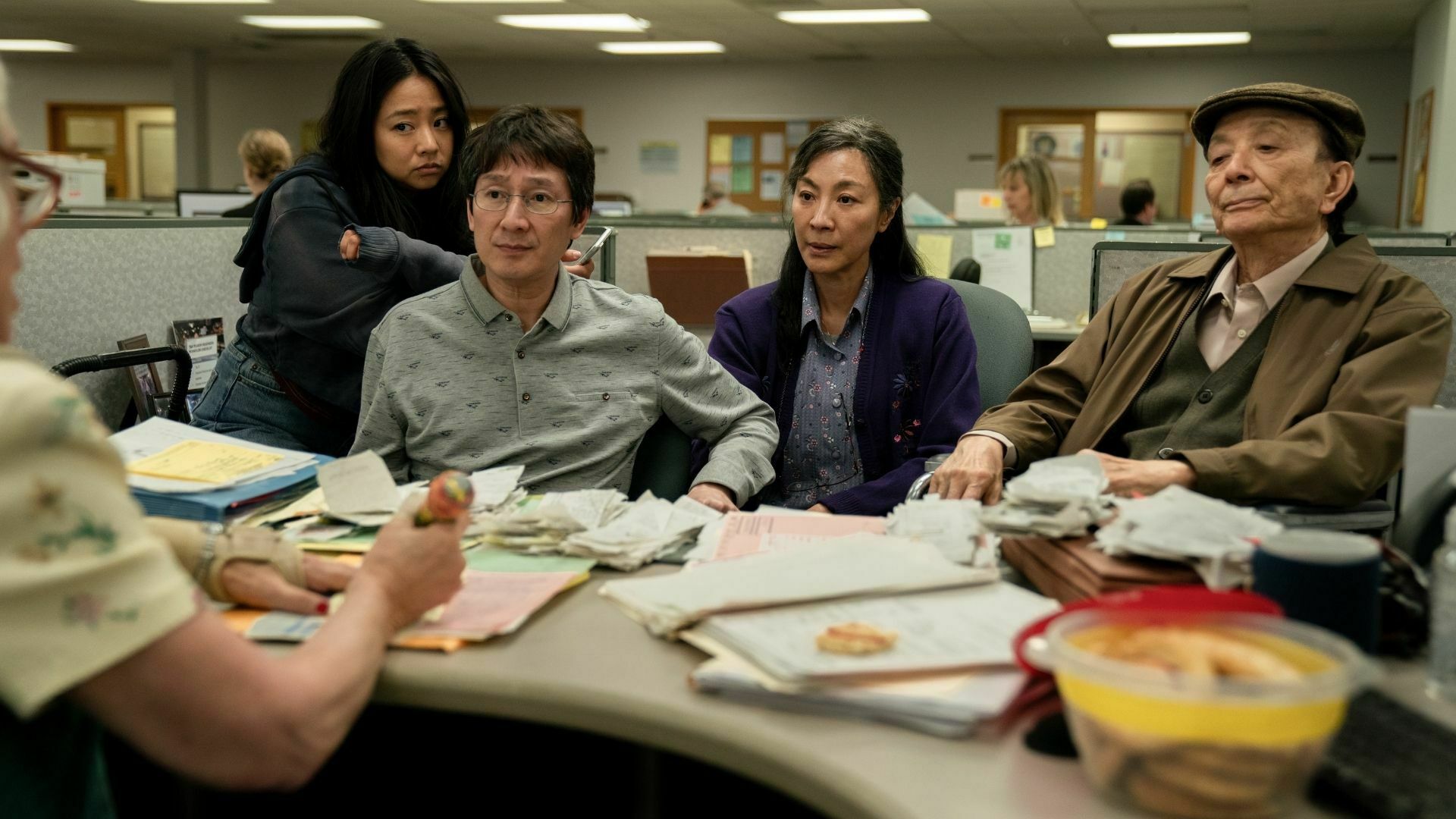
As its title suggests, Everything Everywhere All at Once is a movie that’s about a lot. There’s a rampaging auditor, a family in crisis, a multiverse in peril, meta-references to Crazy Rich Asians and Temple of Doom, and an everything bagel that truly contains everything, including hot dog fingers. But beneath all the purposefully overwhelming spectacle, this critically heralded action-comedy is ultimately a love letter to those who raised writing-directing duo Dan Kwan and Daniel Scheinert (aka, Daniels): their moms…and the internet.
This is the story of a mom
As I detailed in my review, Everything Everywhere All at Once gleefully plunges audiences into the anxiety of Evelyn Wang (Michelle Yeoh), who is a laundromat owner, troubled taxpayer, disappointing daughter, harried wife, lecturing mother, and potential savior of all existence across the multiverses. In an interview with Mashable (focusing chiefly on the use of “Absolutely (Story of a Girl),” Daniels noted that their moms are at the heart of what they do, which might seem odd at first.
Moms are Daniels’ barometer

Credit: A24
Dan Kwan and Daniel Scheinert made a name for themselves by embracing the outrageous and often gross. Their calling card music video for “Turn Down for What“ features a dance-off that gets progressively more bonkers. Their debut feature film, Swiss Army Man, involved Harry Potter star Daniel Radcliffe playing a reanimated corpse, who functions as a fire starter, a grappling gun, and a jet ski powered by gnarly farts. In Everything Everywhere All at Once, the Daniels have fight scenes that employ fanny packs, paper cuts, butt plugs, and dildos. So, is there anything too weird for their movies? When making that call, Daniels rely on their moms.
“We’re always conscious of what every little weird thing we do, how that’s going to affect the audience,” Kwan said. “We’re always thinking, ‘OK, if we turn this joke up just a little bit, how many more audience members are going to lose?'”
“We had so many fights about the farts in Swiss Army Man,” Scheinert recalled, “And how loud to make them and which ones to use, and just trying to invent a barometer in our head. We wanted to push your comfort but not make you leave.”
“We intentionally try to find the right balance,” Kwan said, “Because one of our barometers is, ‘Would we show this to our moms? Is this going to be too much for my mother? Am I going to be too embarrassed?'”
“We’re always a little embarrassed,” Kwan admitted, ” It’s always going to push them a little bit. But if we can still say confidently, my mom’s not going to walk out of the theater, then I think we’re in a good place. And slowly over the years, that barometer has been lifting higher and higher, because we keep pushing our mothers’ limits.”
The Daniels relate to their movie’s apocalyptic antagonist

Credit: A24
In speaking about his bond with his mother, Kwan drew a connection to the mother-child relationship in Everything Everywhere All at Once. While Evelyn has a wide array of battles in her life (across timelines), her core quest is to reconnect with her daughter, Joy (Stephanie Hsu), before the rift between brings on the annihilation of the multiverse. Joy’s need to be truly seen by her mother is what motivates her far-flung variant Jobu (also played by Hsu) to create the everything bagel, a project her mother strains to understand.
“That’s the meta-narrative behind this movie,” Kwan said, “Jobu is us as filmmakers. [Everything Everywhere All at Once] is like us challenging our mothers and being like, ‘Look, you raised us, but also so did the internet. I’m sorry.'” The Daniels’s filmmaking pulls together a wild array of influences, which speak to their experiences, but might baffle their parents. “This movie is almost us trying to empathize with how hard that is for our parents,” Kwan said, “How hard that must have been for them.”
Kwan is speaking to a generation gap made more radical by the rise of the internet, where everything everywhere all at once is a constant. To exhibit that flood of visual and emotional stimuli, Daniels filled this film with wild imagery but also allusions to movies they love. So, in one universe, Michelle Yeoh appears as herself on the red carpet of one of her beloved films, Crazy Rich Asians. Another sequence spoofs Ratatouille with a raccoon twist. In one battle, Ke Huy Quan quips, “Very funny,” referencing his catchphrase from when he played Indiana Jones’s sidekick Short Round in 1984’s Temple of Doom. Then of course, there’s the “Story of a Girl” runner.
The personal touch of metamodernism

Credit: A24
With allusions, there’s a danger that the filmmaker is using a cheap trick to engage their audience, referencing a popular thing the viewer already presumably loves. However, the allusions that Daniels employ — be they references to their casts’ other films, a rampaging Racacoonie, or a DIY Jurassic Park theme — feel personal, like a poignant form of postmodernism. When I posed this to Daniels, Kwan pondered, “I think that’s the version of post-postmodernism that we’re hunting for — that metamodernism, if I’m going to be obnoxious.”
“It’s us trying to grapple with the fact that we are film lovers, who’ve grown up watching so many movies, so much so that we can guess everything that’s going to happen,” Kwan continued. “Everyone is so savvy. We’re so film-literate that it’s really hard to surprise (the audience). And this film is basically trying to acknowledge that weird thing that’s happening right now, where we are at peak media saturation, peak story saturation. And we didn’t want to ignore the fact that we know this audience doesn’t exist in a historic vacuum. Yeah, it’s not about references. It’s more about what is honest and what is personal. I’m so glad that came through and it doesn’t feel like cheap references, because we love all those things we’re referencing.”
For his part, Scheinert hopes their embrace of allusions and outrageousness will influence their audience. “I think there’s also a subtext to our movies,” Scheinert said, “Which is that, if it seems like we had fun making it, it’s almost an invitation for the audience to have fun in their life. I never want to take myself too seriously because I don’t think taking yourself seriously is a very healthy lifestyle. And so we’re kind of always trying to just allow ourselves to inject playfulness, even into things we care deeply about.”
Everything Everywhere All at Once is now in theaters and on digital.
